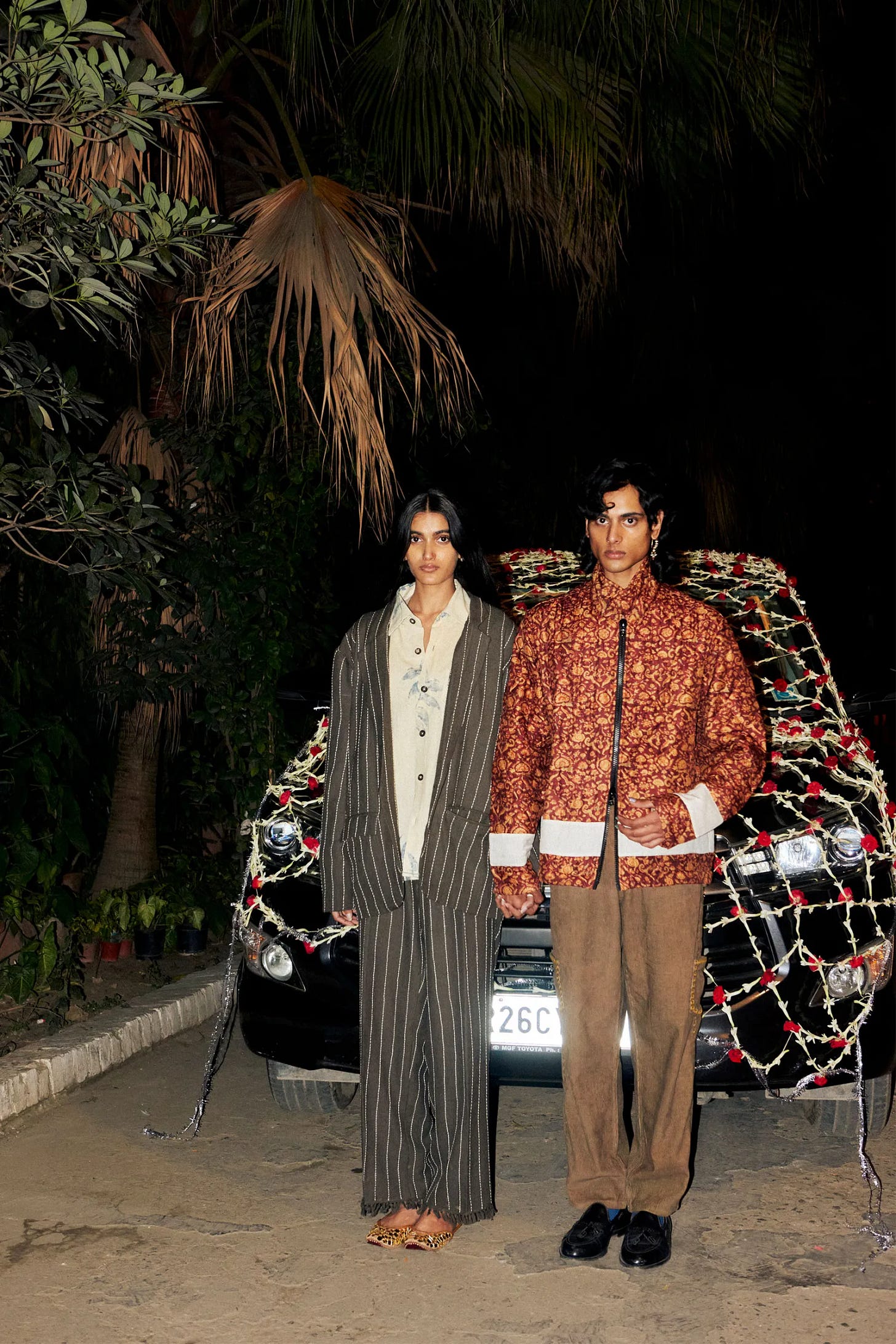One of my favorite hobbies is making great clothing and keepsake items (aka “swag”) for clubs, companies, and organizations. Although I haven’t done it nearly as deeply, I have done it consistently for ~7 years now, learning the challenges of balancing design, manufacturing, and costs. And that’s part of why the story of Kartik Kumra and his brand Kartik Research is so inspiring to me.

Apart from the incredible designs, Kartik Research also executes at a quality bar unseen in most modern fashion – each piece has a local, handmade element to it, worked on by local artisans over (relatively) long periods of time. Each season explores a different culture and ethnic group across India, of which there are over 2,000.
What I really like about this:
During the COVID-19 pandemic, Kumra went home and started cold-calling and driving to local clothing manufacturers to try and get his 1-of-1 pieces made
Manufacturers typically don’t make smaller quantities, especially in the unique, challenging designs Kumra was asking for
A perfect product-timing fit – one struggling manufacturer took Kumra’s first order for just 40 pieces
Kumra worked hard to put himself in a position to take advantage of when lightning struck – Kendrick Lamar and Lewis Hamilton wore some of those early pieces, resulting in Kumra’s company – at the time known as Karu* Research – blowing up
Kumra found community + feedback in like-minded people from the Throwing Fits’s Discord server, which helped him build a cult audience in the beginning
Modeling photos use local, South Asian models and have an incredible creative direction of their own, with unique background composition in addition to the outfits






Right-clicked on from Kartik Research The original collection in particular – FW23 – has some of the most visually compelling images I’ve seen, combining local scenes with the clothing acting as artwork



Right-clicked on from Kartik Research A lot of these clothes remind me of the traditional clothes that my mom, dad, brother, and I would wear on holidays**
When I was little, I thought a lot of these designs were over-the-top – too many sequins, sparkles, mirrors, clashing patterns, etc.
I’ve learned to appreciate that traditional clothing the more I’ve grown up, but there’s something immensely beautiful about the way Kartik Research fuses that type of clothing with Western fashion philosophies
The success of Kartik Research makes me quite sentimental:
While South Asians have prevailed in traditional STEM fields, there’s very few examples of South Asian cultural representation in mainstream US-centric fashion, art, drama, television, movies, etc.
India specifically has been often stereotypically associated with low quality (e.g. “Indian call centers”, “cheap Indian software engineers”, etc.)
Kumra is representation of everything opposite: opinionated and high-quality, yet still locally produced – he’s willing the world he wants into existence

Right-clicked on from Kartik Research
“The premise of the brand is to be a vessel for Indian artisanship. Something I struggled with growing up was the idea that Indians are not able to make nice things in India outside of things like weddingwear. That, and the frustration of not seeing Indians represented in the way I wanted them to be.”
Kartik Kumra, founder of Kartik Research
2024 for Vogue Business
To see more incredible work from Kartik Research, you should check out their Instagram or, even better, explore it in-person at &son in NYC (about which I’ll also write more someday I’m sure).
*Kartik Research was founded as Karu Research, but had to rename itself after a trademark issue. I find the original name cute because it alludes to common South Asian nicknames that shorten someone’s name to end in “-u” (e.g. “Zain-u” or “Sameer-u”). Kartik Kumra’s friends/family likely call him “Karu” and he probably named the brand after that.
**My parents are originally from Karachi, Pakistan, and both my brother and I were born in Dallas, TX. I don’t pretend to fully understand the context behind all the Indian subcultures or even just the ones represented in this issue; however, there is some overlap in patterns, materials, and approach to fashion across the South Asian subcontinent that I can relate to.



